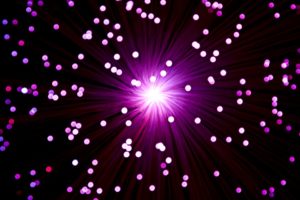
Backlighting is a common feature in many devices. Keypads and switches, for instance, often feature backlighting. It’s able to illuminate the interface buttons on keypads and switches so that they are easier to see. There are different types of backlighting, though, one of which is fiber optic. For a better understanding of fiber optic backlighting, keep reading.
What Is Fiber Optic Backlighting?
Fiber optic backlighting is a lighting solution that leverages glass or plastic fibers. These fibers are ultra thin, with many of them measuring about the same diameter as a strand of human hair. Fiber optic backlighting consists of bundles of these ultra-thin strands.
Whether made of glass or plastic, the strands used in fiber optic backlighting are transparent. Transparency, of course, allows light to shine through them. This is essentially how fiber optic backlighting works. It doesn’t necessarily produce light. Rather, fiber optic backlighting distributes light across the keyword or switch with which it’s used.
How Fiber Optic Backlighting Works
As previously mentioned, fiber optic backlighting doesn’t produce light. It’s designed to distribute light. Most fiber optic backlighting systems work in conjunction with light-emitting diodes (LEDs). The LEDs produce light that travels through the fiber optic backlighting before ultimately reaching the keypad’s or switch’s buttons.
Advantages of Fiber Optic Backlighting
There are several advantages associated with fiber optic backlighting. For starters, it will evenly distribute light across the keypad or switch. If you choose a keypad or switch with a traditional backlighting system, you may discover that some areas of the interface are brighter than others. The edges of the buttons, for instance, might be brighter than the center of the interface. Fiber optic backlighting prevents this from happening by distributing light evenly across the keypad or switch.
Devices with fiber optic backlighting are energy efficient. Fiber optic backlighting can essentially reduce the need for bright, energy-hungry backlighting. Devices can be fitted with LEDs and fiber optic backlighting for their illumination needs, resulting in lower energy usage. Without fiber optic backlighting, devices may require a more energy-intensive lighting system.
Fiber optic backlighting is long-lasting. It will last for as long as the lighting system with which it’s used. If it’s used with LEDs, for example, the fiber optic backlighting will last until those LEDs die out. And being that LEDs are long-lasting, fiber optic backlighting is long-lasting as well. Most LEDs can last for over 100,000 hours.
